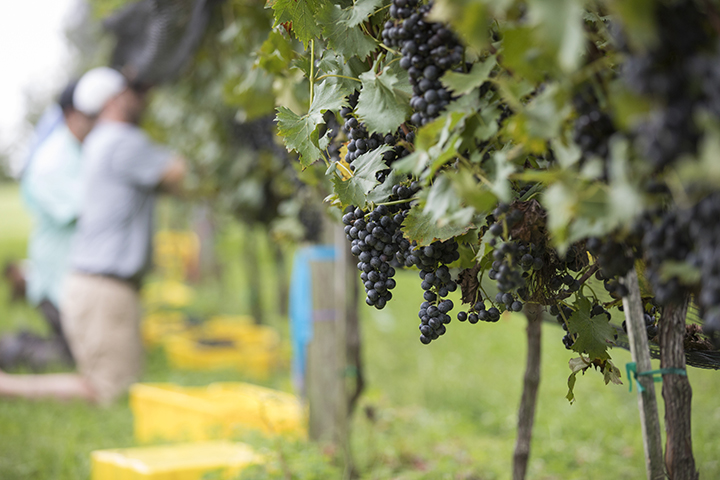By Clint Thompson
There is still a month left of harvest for some grape varieties in the Southeast, but the crop has already shown better results than last year. The better yields are attributed to the dry weather experienced this summer, said University of Georgia Cooperative Extension fruit disease specialist Phil Brannen.

“I think, overall, it’s a lot better this year. It’s always the contrarian thing, we need drier weather. We’ve had a good bit of rain lately, but this summer it’s been a little bit of a drier year. From the standpoint of rots and things like that, we’re seeing some. But it’s not nearly as much as we’ve had in the past. Downy mildew and powdery mildew are pretty minimal in the vineyards where I’ve gone,” Brannen said.
Producers have been harvesting grapes for the last month or so and will continue into October for some varieties. Most diseases depend on moisture to impact crops. The prolonged dry spell this summer contributed to lack of disease development.
“I think what I’m really noticing it in is in downy mildew. There’s just a lot less downy mildew and that’s one of our major pathogens on grapes. When I look for downy mildew in the vineyards I’ve visited, I can find it, but I don’t see near as much as I saw last year,” Brannen said. “Even though we’ve had a good bit of rain as of late, those drier spells that we’ve had have really helped us reduce the amount of turnover inoculum in the field.
“We call it a compound interest disease. You get a little bit and it keeps on multiplying and really ramps up if you have it early in the season. When we had that drier period back in the first of the summer, I think that really helped us out.”
While most diseases’ impact were minimal, Pierce’s disease was a problem for some growers. Brannen noted in the UGA Extension Viticulture Blog some observations he noticed from this year’s crop about the disease.









